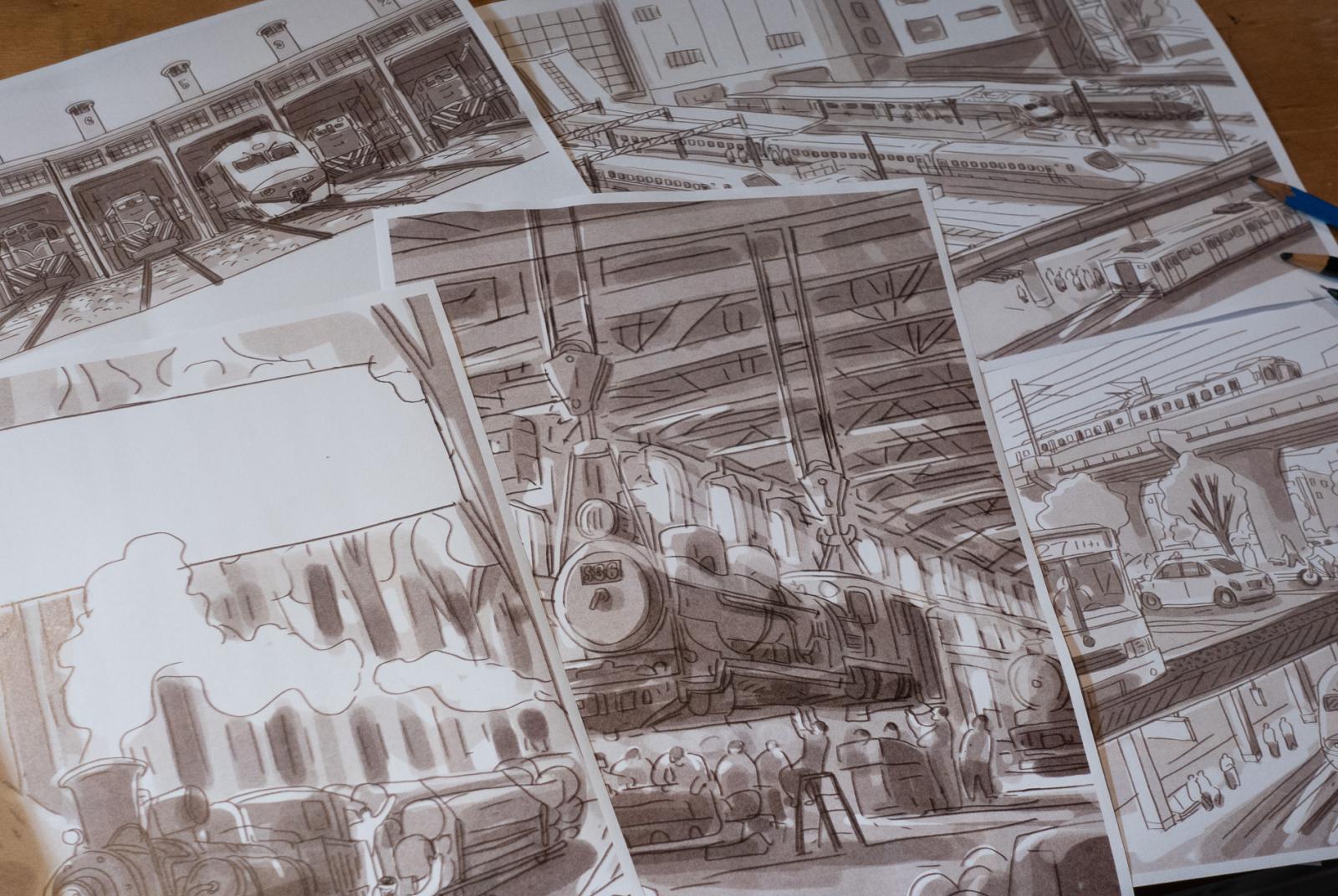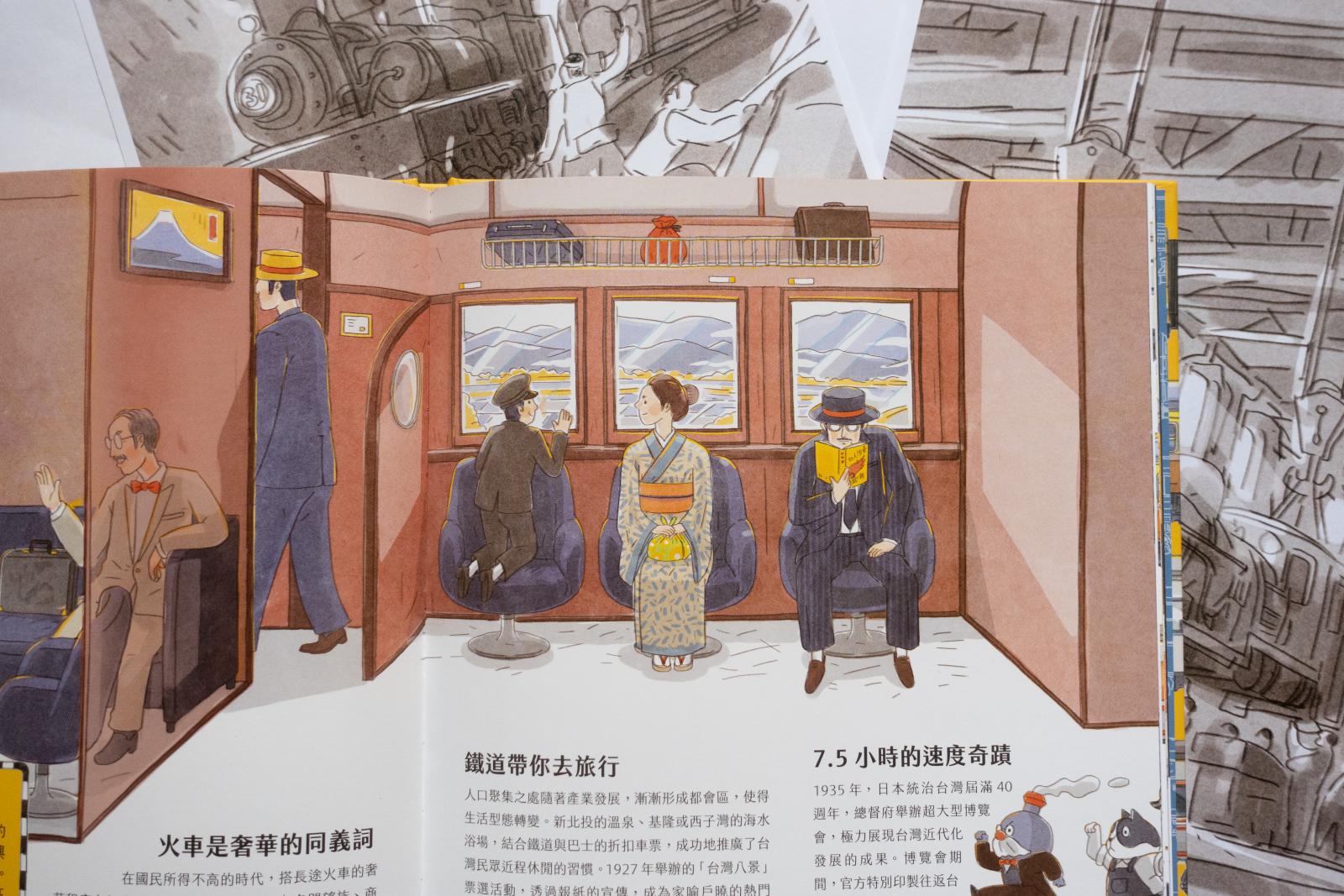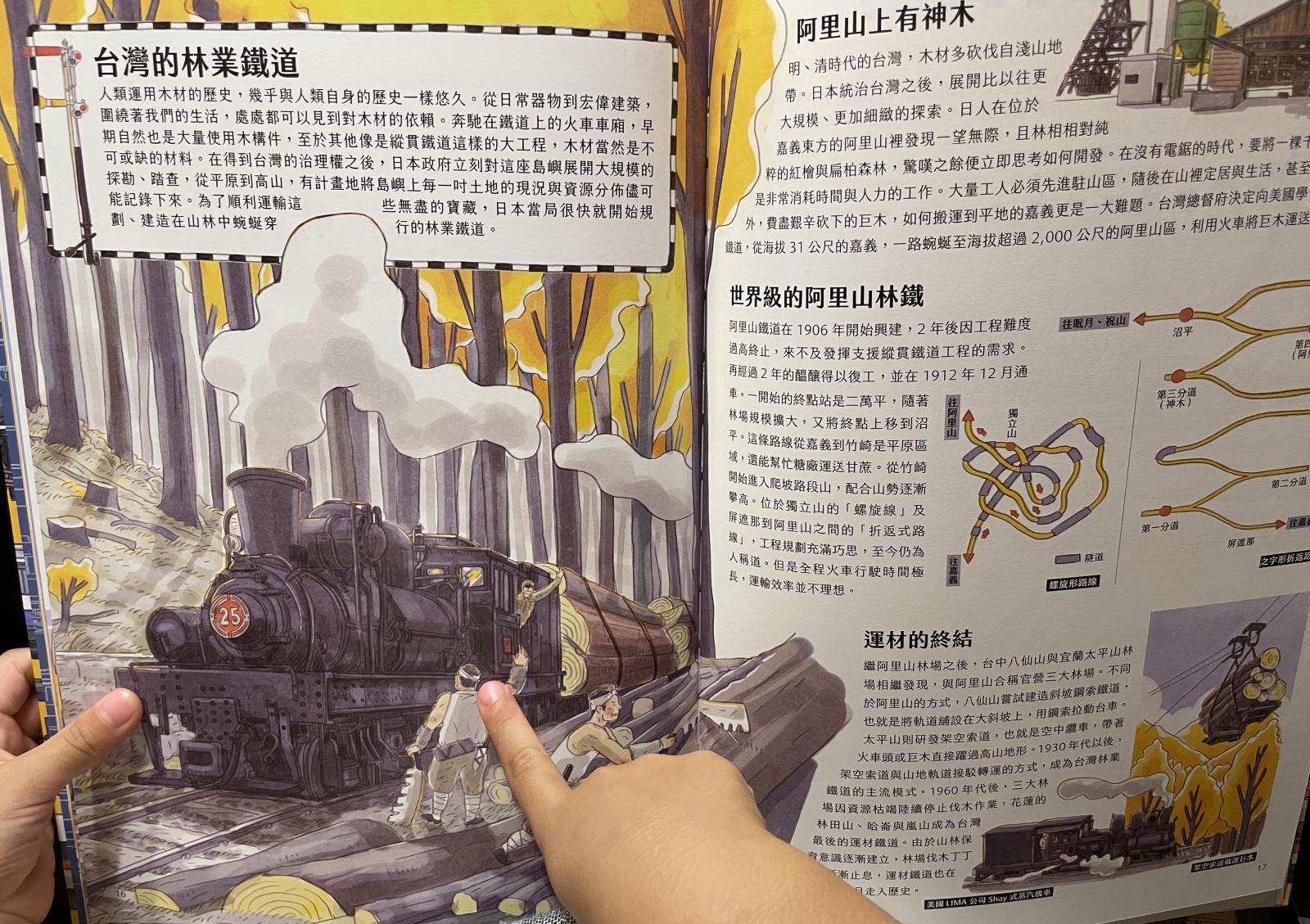Like a lot of children their age, Editor Lin Chaiyi’s kids absolutely love looking at trains, riding trains, and playing with trains. As a family, they’ve traveled to various railway attractions all over Taiwan, from the Sugar Railways to the Alishan Forest Railway, from the Taipei Railway Workshop to the Changhua Roundhouse, as well as a lot of old stations. These were all places with stories to tell, places where precious memories were collected. For Lin, her children’s interest in trains broadened her whole family’s horizons. Unfortunately though, most books for children about railways were focused on the trains and vehicles themselves, which made it hard to satisfy her kids’ desire to learn more about the broader historical and cultural context of the railways.
Lin hopes that their curiosity about the world and everything in it will continue to be inspired by reading and that it won’t fade as they grow up. Each new interest brings with it a whole new perspective and for a child that loves trains, those stories about railways can act as a bridge between them and history. At the same time, she also hopes that she can use the general public’s affection for trains to draw more people in so they can get to know more about Taiwan’s local history and culture. With this in mind, she approached Ku Ting-Wei, the editor in chief of Rail News and the director of the Takao Railway Museum, and proposed the idea of collaborating on a project. Ku Ting-Wei has loved trains since he was very young and is not only familiar with the field, but also has a wide range of interests that help make railways accessible for new readers who are just getting into them for the first time.

Ku Ting-Wei (left), author of History of Taiwan Railways, with illustrator Croter (right)
Lin and Ku invited Croter, who has won awards both at home and abroad, to illustrate the book. His subtle illustration style has a realistic warmth to it so that in his hands even the most mundane things can be transformed into evocative scenes. Croter’s artwork also gives the reader a strong sense of his feelings about Taiwan and just how devoted he is to the land. There are so many details involved in painting railways that this project would definitely take a lot of motivation to complete. As expected, the process of creating and editing the book was far from easy, especially given the many issues involved in ensuring the accuracy of the research.
In order to make the manuscript more readable and understandable, the editing process repeatedly refined the text and converted parts of it into illustrations, and then carefully planned the content and layout of the illustrations. To strike a balance between the extensive research and making the book aesthetically appealing, the author and editor-in-chief searched high and low for historical data and consulted experts when providing illustrations for reference. Every aspect of the book was designed to be as close to perfect as possible.
Take the illustrations of the Taipei Railway Workshop for example. The photos of the vehicles undergoing maintenance were slightly blurred, so Croter boldly tried to draw a wider scene which worked out beautifully. However, Ku Ting-Wei looked closely at the sketch of the steam engine going into the workshop for maintenance and noticed certain parts of the vehicle and components that had been dismantled weren’t in quite the right place, so the editor-in-chief searched everywhere for some reference materials and interviewed professionals.

“The Taipei Railway Workshop”: Preliminary sketches

“The Taipei Railway Workshop”: Published illustrations
Another example is the section on “The Golden Age of Taiwan’s Railways” where Lin suggested that Croter could draw people traveling by train during the Japanese colonial era to give readers an image of life to connect to. However, even the limited photographs they could find were blurry, and none of the previous books about railways had illustrated those scenes before, so they consulted the train specialist Hung Chihwen who had some valuable documents on the subject.

“The Golden Age of Taiwan’s Railways”: Compared to all the research challenges Corter faced with the scenes and vehicles, he found drawing the characters and costumes far more relaxing.
In the end, the book’s simple, concise yet detailed text paired with the intricate illustrations of historical scenes and the multilayered graphic design appeals to readers of all ages and incorporates so many other subjects including geography, industry, culture, technology, and so on. As well as being selected as a recommended title by various outlets, the book has also received positive feedback from young children, teachers, parents, the arts sector, the general public and railway enthusiasts.

History of Taiwan Railways recreates historical scenes, and its multilayered design evokes different feelings in readers of different ages. After Lin’s children read it, they were reinspired by their trip to Alishan Forest Railway all over again.